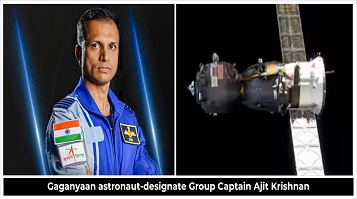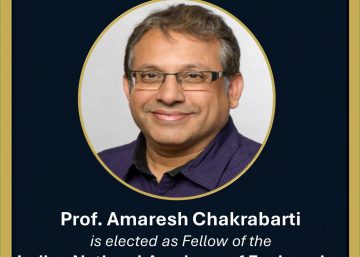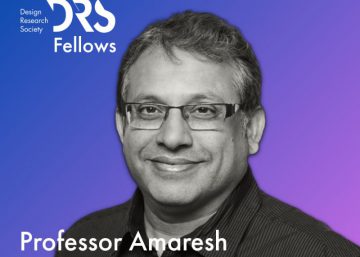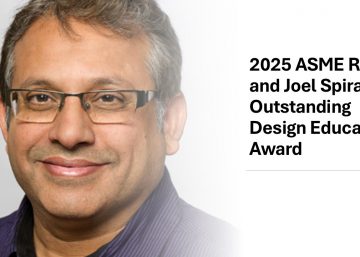Group Captain Ajit Krishnan, Gaganyaan astronaut-designate, presents his research “on the study comparing different viewing methods for manually de-orbiting spacecraft using VR simulation”, supervised by Professor Pradipta Biswas at DM, IISc
Captain Krishnan is currently pursuing his master’s by research at DM, IISc . He presented his research work at a colloquim and will soon defend his thesis. The work is also done in collaboration with a team from Indian Space Research Organisation (ISRO).
Early this year, Prime Minister Narendra Modi announced the 4 Astronaut designates to be on board the maiden human spaceflight mission “Gaganyaan” – of the Indian Space Research Organisation (ISRO) to demonstrate India’s human space flight capability. The Gaganyaan Mission is India’s first human space flight programme that aims to send a team of astronauts into space, to an orbit of 400 km for three days, and bring them safely back to Earth.
Captain Ajit Krishnan from the Indian Air Force is among the four Astronaut designates for India’s Gaganyaan Mission. Born in Chennai on April 19, 1982, he is alumnus of NDA, Defence Services Staff College, Wellington and a recipient of President’s Gold Medal and Sword of Honour at Air Force Academy. He was commissioned into the fighter stream on July 21, 2003 and is a flying instructor and a test pilot with approximately 2900 hours of flying experience. Captain Krishnan is currently pursuing his master’s by research at the Department of Design and Manufacturing (DM), Indian Institute of Science (IISc) on “the study using virtual reality simulations to compare two different viewing methods for manually de-orbiting spacecraft” under the supervision of Professor Pradipta Biswas, Associate Professor at DM and Robert Bosch Centre for Cyber Physical Systems, IISc, Bengaluru. This work is also done in collaboration with a team from Indian Space Research Organisation (ISRO). Captain Krishnan has recently presented his work at a colloquim and will soon defend his thesis.
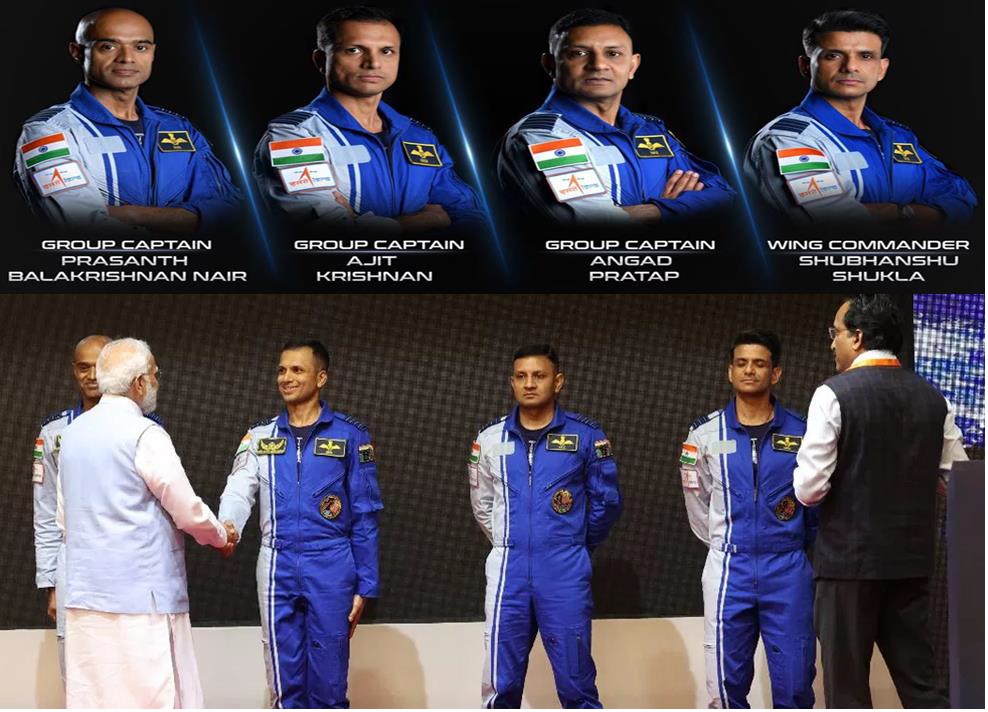
As India gears up for its first human spaceflight mission, the four selected astronauts are undergoing extensive training at the Astronaut Training Facility in Bengaluru, which includes classroom training: covering theoretical aspects of spaceflight and mission protocols; physical fitness training: ensuring astronauts meet the stringent physical demands of space travel; simulator training: providing hands-on experience with mission simulations. Flight suit training; preparing astronauts for the operational aspects of their space suits.
Returning from space, atmospheric re-entry has always been regarded as the most challenging aspect of human spaceflight. Although all crewed spacecraft are equipped with automated systems to ensure safe de-orbiting and re-entry, they also feature manual overrides for emergencies. Captain Krishnan’s research examined the “bottom view” method employed in Russian and Chinese spacecraft against the “front view” favoured by NASA. In the bottom view, astronauts can see the entire circular Earth horizon, while the front view provides an aircraft-like windshield perspective with a partial horizon arc. This work was recently presented at IEEE SPACE 2024 (SPace, Aerospace and defenCE Conference).
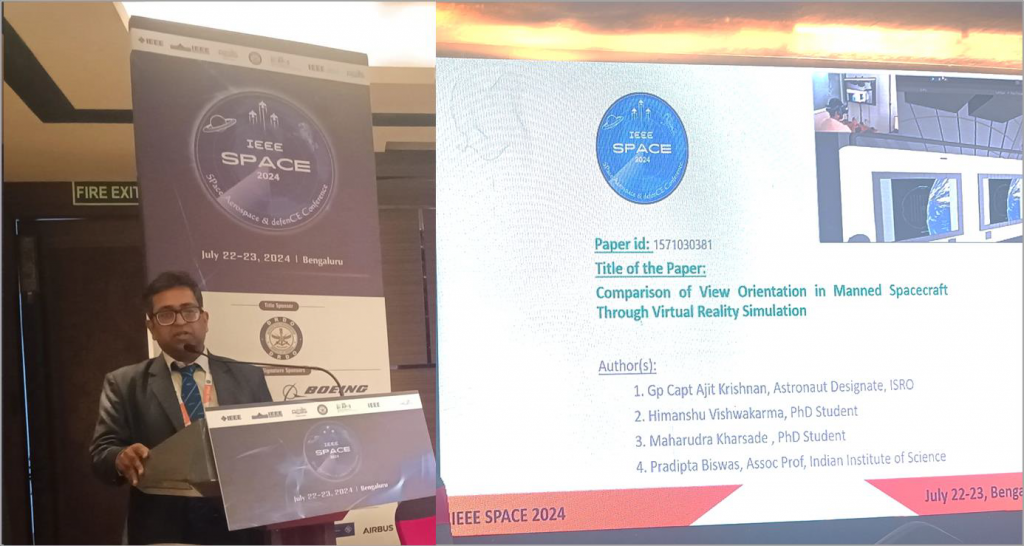
The study utilised a custom-built unity virtual reality (VR) spacecraft simulator, with six military test pilots and six civilians with gaming experience participating in the experiment. Participants were tasked with manually achieving the correct de-orbit attitude for a spacecraft in a 400 km orbit. The researchers collected data on task completion time, fuel consumption, and attitude error, along with eye tracking and EEG (electroencephalogram) data, recording brain activity, to assess cognitive load.
Key findings revealed that the bottom view resulted in faster task completion times for both pilots and civilians. Eye tracking data showed lower saccade velocities with the bottom view, suggesting reduced visual search. Nasa Task Load Index scores were significantly lower for the bottom view, indicating decreased cognitive workload. Interestingly, pilots showed a preference for the bottom view in usability surveys.
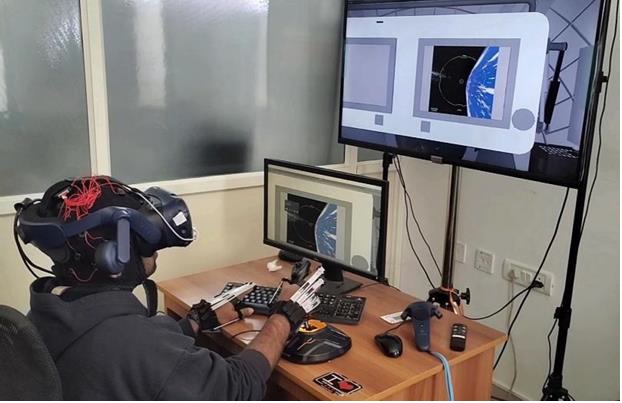
The team noted that while both methods allowed effective de-orbiting, the bottom view was overall “easier to operate” for the manual de-orbit task. They suggested that their findings could inform the design of manual controls for future spacecraft. The study also highlighted the potential of VR simulators and human factors analysis tools for investigating spacecraft interfaces. This research provides valuable insights into human spaceflight operations as more countries and private companies develop crewed spacecraft capabilities.
Links to media coverage:
1. WION :
https://www.wionews.com/science/us-or-russian-spacecraft-which-is-user-friendly-indian-astronauts-research-study-gives-details-747329
2. Times Of India:
https://timesofindia.indiatimes.com/city/bengaluru/study-finds-bottom-view-faster-and-easier-for-manual-spacecraft-operations/articleshow/112053345.cms
